#3rd C BCE
Text
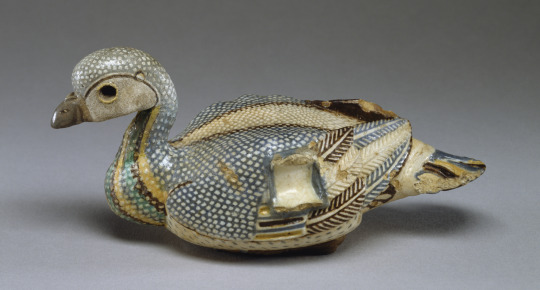
Vase in the shape of a duck, Ptolemaic Egypt (c. 3rd-2nd century BCE; crafted in Alexandria), faience wit a polychrome glaze
Currently in the collection of the Walters Art Museum in Baltimore, Maryland. accession no. 48.421
#isaac.txt#archaeology#art#egyptian archaeology#egypt#egyptology#hellenistic#ptolemaic egypt#faience
2K notes
·
View notes
Text





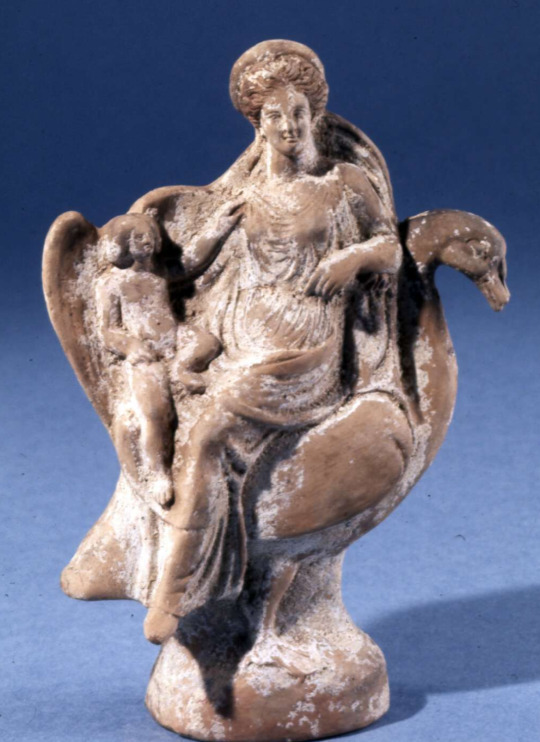
Engraved Scaraboid with Aphrodite Riding a Goose, about 400 B.C.E.
Aphrodite riding on a goose. Terracotta from Locri, Calabria, Italy. Made in Boeotia c. 470 – 460 BC. [this actually looks like a swan to me; look at the upper beak?].
Aphrodite on a goose, 2nd-1st Century B.C.E.
Aphrodite riding on a goose, 380 BCE, Taranto.
Relief of Aphrodite on a goose, 50 BCE-100 CE, Italy.
Terracotta figurine of Aphrodite seated on a goose, 3rd to 2nd century BCE, Cyprus.
#aphrodite#goose#GOOSEPHRODITE SWEEP#ceramics#ancient greece#no but this is a very cute theme. imagine her arriving on a big honking goose. everyone running for cover#relief#ancient art
888 notes
·
View notes
Photo
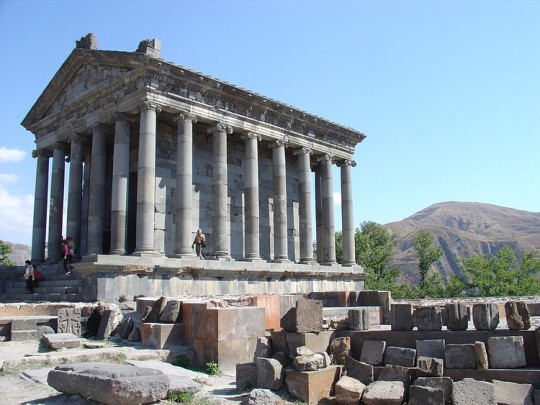
Ancient Armenia
Ancient Armenia, located in the south Caucasus area of Eurasia, was settled in the Neolithic era but its first recorded state proper was the kingdom of Urartu from the 9th century BCE. Incorporated into the Persian Empire of Cyrus the Great in the 6th century BCE, the Orontid dynasty ruled as Persian satraps, a function they performed for their next overlords the Macedonians and Seleucid Empire into the 3rd century BCE. Under the Artaxiad and Arsacid dynasties the country flourished but was often caught between the ambitions of Parthia and Rome, and then the Sasanian and Byzantine Empires. The boundaries of the state varied considerably over the centuries but such common factors as religion and language were united by long-lasting dynastic clans, which gave Armenia its own unique identity throughout antiquity.
Hayasa-Azzi (1500-1200 BCE)
The first identifiable culture in the region is the Hayasa-Azzi, an indigenous tribal confederation which flourished on the fertile plateau of ancient Armenia around Mount Ararat and parts of modern-day eastern Turkey between c. 1500 and c. 1200 BCE. The Hayasa-Azzi are the eponym of the Hay people, the term Armenians use to describe themselves and their state, Hayastan. Over time, the Hayasa-Azzi mixed with other ethnic groups and local tribes such as the Hurrians, Arme-Shupria, and Nairi, probably motivated by the need for defence against more aggressive and powerful neighbours like the Hittites and the Assyrians. They were probably infiltrated by the Thraco-Phrygians following the collapse of the Hittite Empire c. 1200 BCE. Eventually, these various peoples and kingdoms would be fused into the region's first recognisable and recorded state, the kingdom of Urartu from the 9th century BCE.
Continue reading...
99 notes
·
View notes
Text
A Hellenic robot from 3rd c. BCE !
2K notes
·
View notes
Text



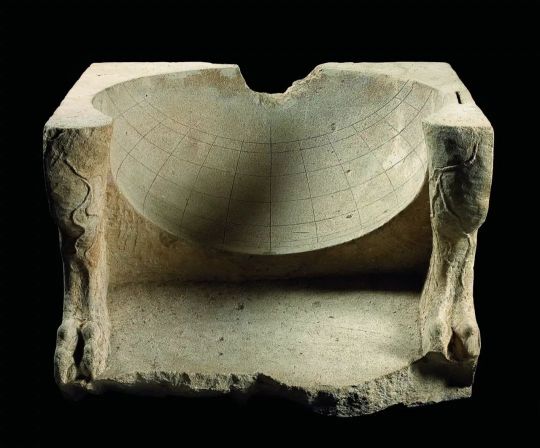
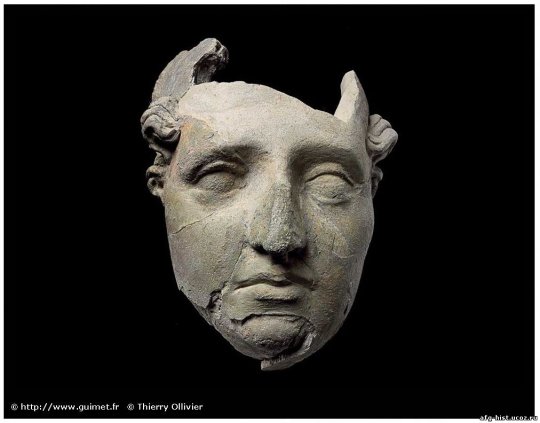
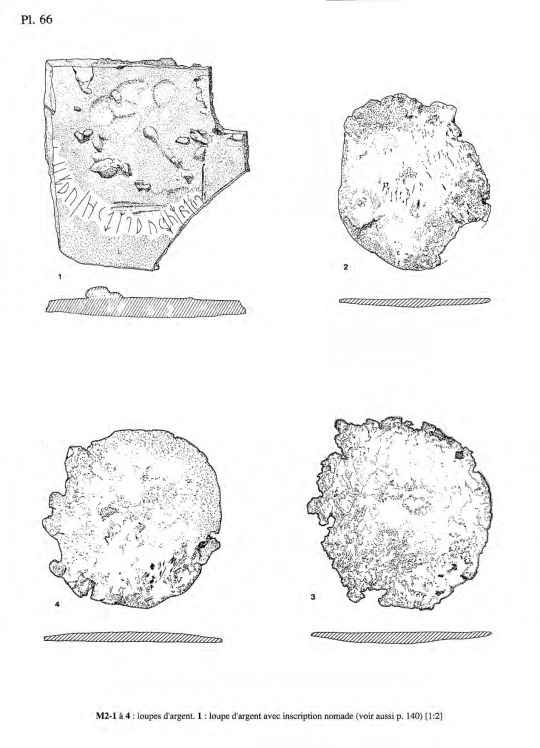
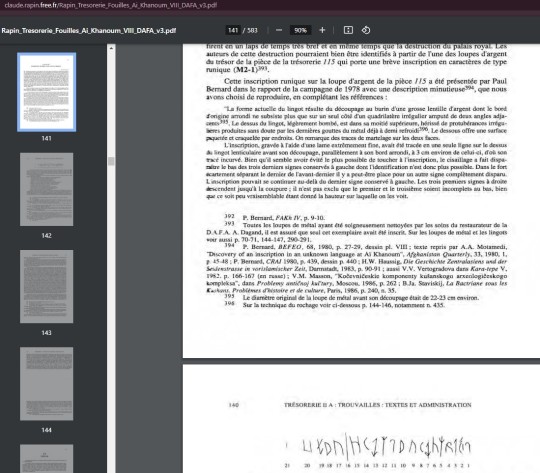
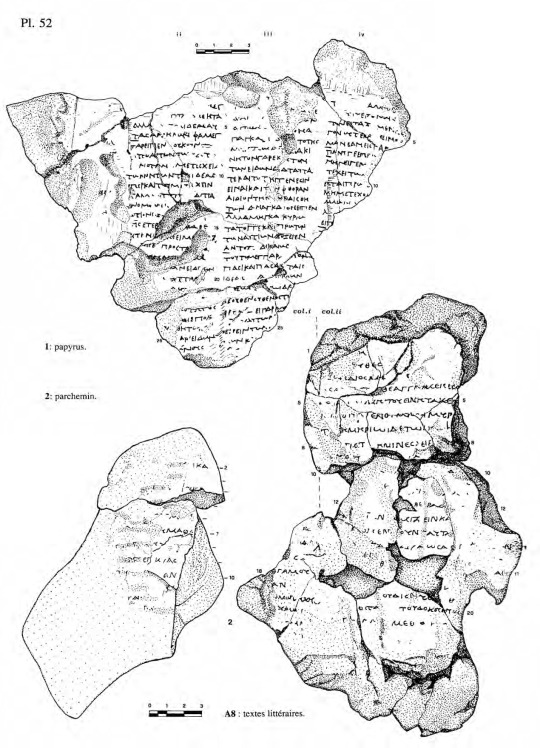
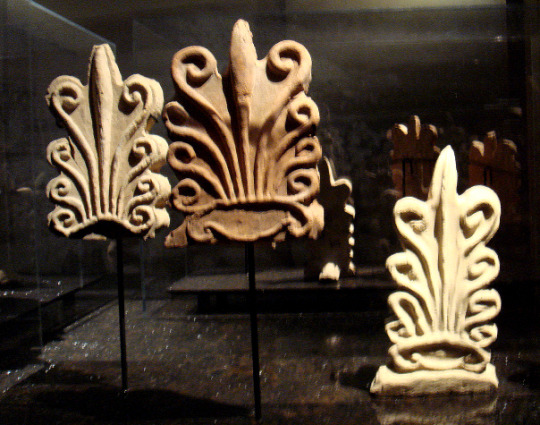





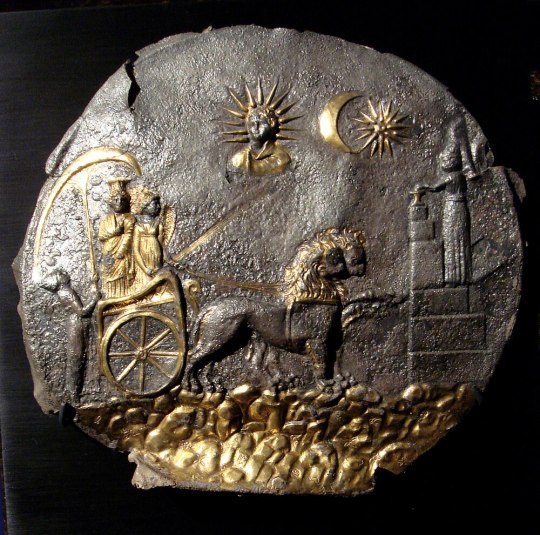

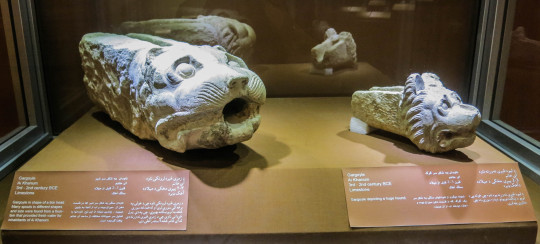

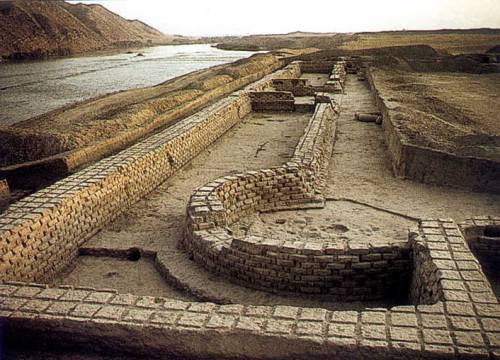



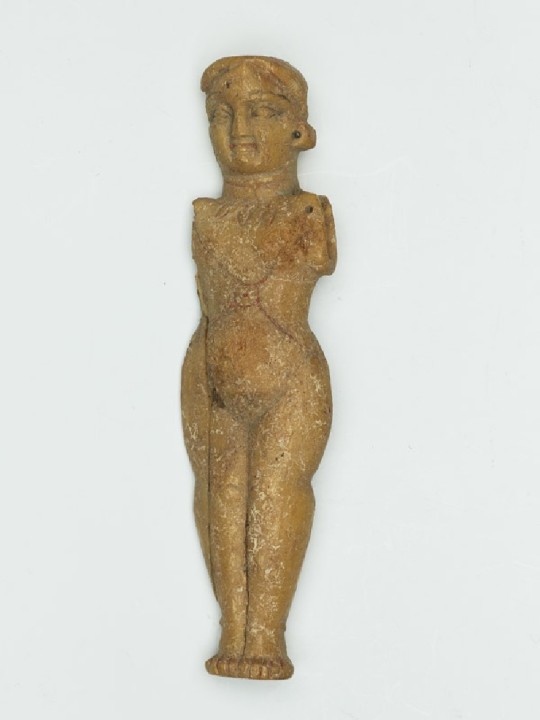





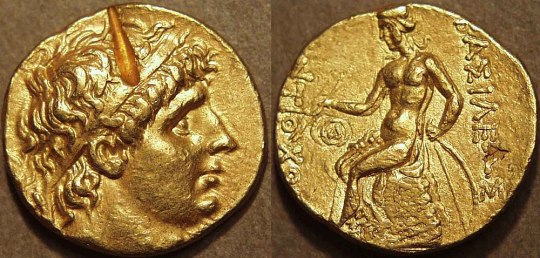

Ai Khanoum 3rd C. BCE - 2nd C. CE. More images on my blog, link at bottom.
"These wise sayings of men of old,
The words of famous men, are consecrated
At holy Delphi, where Klearchos copied them from carefully
To set them up, shining from afar, in the sanctuary of Kineas.
As a child, be well behaved;
As a young man, self-controlled;
In middle age, be just;
As an elder, be of good counsel;
And when you come to the end, be without grief.
—trans. of Ai Khanoum stele by Shane Wallace and Rachel Mairs.
Ai-Khanoum (/aɪ ˈhɑːnjuːm/, meaning Lady Moon; Uzbek Latin: Oyxonim) is the archaeological site of a Hellenistic city in Takhar Province, Afghanistan. The city, whose original name is unknown, was likely founded by an early ruler of the Seleucid Empire and served as a military and economic centre for the rulers of the Greco-Bactrian Kingdom until its destruction c. 145 BC. Rediscovered in 1961, the ruins of the city were excavated by a French team of archaeologists until the outbreak of conflict in Afghanistan in the late 1970s.
The city was probably founded between 300 and 285 BC by an official acting on the orders of Seleucus I Nicator or his son Antiochus I Soter, the first two rulers of the Seleucid dynasty. There is a possibility that the site was known to the earlier Achaemenid Empire, who established a small fort nearby. Ai-Khanoum was originally thought to have been a foundation of Alexander the Great, perhaps as Alexandria Oxiana, but this theory is now considered unlikely. Located at the confluence of the Amu Darya (a.k.a. Oxus) and Kokcha rivers, surrounded by well-irrigated farmland, the city itself was divided between a lower town and a 60-metre-high (200 ft) acropolis. Although not situated on a major trade route, Ai-Khanoum controlled access to both mining in the Hindu Kush and strategically important choke points. Extensive fortifications, which were continually maintained and improved, surrounded the city.
Many of the present ruins date from the time of Eucratides I, who substantially redeveloped the city and who may have renamed it Eucratideia, after himself. Soon after his death c. 145 BC, the Greco-Bactrian kingdom collapsed—Ai-Khanoum was captured by Saka invaders and was generally abandoned, although parts of the city were sporadically occupied until the 2nd century AD. Hellenistic culture in the region would persist longer only in the Indo-Greek kingdoms.
It is likely that Ai-Khanoum was already under attack by nomadic tribes when Eucratides was assassinated in around 144 BC. This invasion was probably carried out by Saka tribes driven south by the Yuezhi peoples, who in turn formed a second wave of invaders, in around 130 BC. The treasury complex shows signs of having been plundered in two assaults, fifteen years apart.
Although the first assault led to the end of Hellenistic rule in the city, Ai-Khanoum continued to be inhabited; it remains unknown whether this reoccupation was effected by Greco-Bactrian survivors or nomadic invaders. During this time, public buildings such as the palace and sanctuary were repurposed as residential dwellings and the city maintained some semblance of normality: some sort of authority, possibly cultish in origin, encouraged the inhabitants to reuse the raw building materials now freely available in the city for their own ends, whether for construction or trade. A silver ingot engraved with runic letters and buried in a treasury room provides support for the theory that the Saka occupied the city, with tombs containing typical nomadic grave goods also being dug into the acropolis and the gymnasium. The reoccupation of the city was soon terminated by a huge fire. It is unknown when the final occupants of Ai-Khanoum abandoned the city. The final signs of any habitation date from the 2nd century AD; by this time, more than 2.5 metres (8.2 ft) of earth had accumulated in the palace.
While on a hunting trip in 1961, the King of Afghanistan, Mohammed Zahir Shah, rediscovered the city. An archaeological delegation, led by Paul Bernard, unearthed the remains of a huge palace in the lower town, along with a large gymnasium, a theatre capable of holding 6,000 spectators, an arsenal, and two sanctuaries. Several inscriptions were found, along with coins, artefacts, and ceramics. The onset of the Soviet-Afghan War in the late 1970s halted scholarly progress and during the following conflicts in Afghanistan, the site was extensively looted."
-taken from Wikipedia
...
"The silver ingot engraved with runic characters found during the excavations of the Treasury could suggest they were Sakā/Sai. This inscription comprises 21 characters of a script and a language that are unknown and both attributed to nomadic people of Sakā origin, by comparison with a dozen similar inscriptions coming from an area extending from Ghazni in Afghanistan to Almaty in Kazakhstan, and dated between the 5th century BC and the 8th century AD."
-taken from Ai Khanoum after 145 BC: The Post-Palatial Occupation by Laurianne Martinez-Sève, University of Lille, 2018
#ancient history#antiquities#art#paganism#statue#museums#sculpture#history#greek art#greek gods#ancient greek#greek myth#scythian#pagan#ancient art#afghanistan
186 notes
·
View notes
Text
Calendar manipulation in Ancient Greece
This really isn’t a topic I’m thrilled to tackle, but since the Theogamia there has been so much talk about calendar discrepancies that it looks like the right time to bring this up. Don’t expect this to be eloquent, I’m writing this while absolutely knackered.
I’m not going to focus too much on the problem of modern calendar reconstructions, what I’ll be going into here is the historical evidence we have about how awfully inconsistent the ancient Athenian calendar could be, either by nature or by human intervention over time.
The problem of the new moon
In theory, the Athenian calendar and other Greek calendars are lunar and each month begins on the new moon. Sacha Stern, in Calendars in Antiquity, tells us that the writer Geminus (1st c. BCE), states that the Greek month began when the new moon crescent was first sighted but Geminus also states that the new moon can sometimes be sighted on the 1st of the month, but sometimes not until the 3rd. This statement is interesting, because it implies that, should the moon not be visible (clouds), there was a mathematical basis to the calculation of the months that still made the month begin regardless of what the sky looked like.
There comes also the problem of conjunction (aka when the moon in orbit passes between the sun and the earth, making the moon invisible). The traditional ancient assumption is that the day of conjunction is the last day of the month. However, the interval between the day of conjunction and of the new moon is usually around two days; so if the month began when the new moon was first sighted, conjunction should have been typically on the penultimate day of the previous month.
Those difficulties, along the fact that other authors, such as Aratus give conflicting information leads Stern to say this:
Modern scholars have generally accepted Geminus’ statements that the Greek month began at first visibility of the new moon. However, it is clear on Geminus’ own evidence, as well as on the evidence of the other passages just mentioned, that this rule was not strictly followed, and indeed, quite possibly, that it did not constitute a rule. Moreover, we do not know of any procedure that may have been used, and indeed that would have been necessary, for such a rule to be enforced. There is no evidence, for example, in the whole of Graeco-Roman literature of anyone sighting the new moon.
And this leads us to the rather uncomfortable idea that, in practice, a lot of the calendars simply might not have been as well aligned with astronomical moon phases in the way we conceptualize it today.
Francis M. Dunn, in an article titled Tampering with the Calendar, lists passages from ancient Greek sources that seem to corroborate this idea:
Thucydides 2.28 in a passing mention of a solar eclipse […] distinguishes the astronomical "new moon" or conjunction, at which eclipses must occur, from the conventional "new moon" or noumenia, which followed the first visible crescent. The historian, in other words, is aware that there is an astronomical "new moon" or conjunction which is different from the first day of the civic month.
Man-made adjustments
Because calendars impacted the religious, civic and political lives of each city-states, it wasn’t uncommon for city-states to make adjustments to them.
The type of modification we’re most used to is the addition of intercalary days or month that aim to realign the calendar with astronomical reality. But we have evidence that this isn’t the only motivation.
For example:
In the 430's (SEG XXXVI 12), 420's (SEG XL 12) or 410's (SEG XLII 17), in connection with offerings at Eleusis, the demos instructed the archon to add a second Hekatombaion.
In 228/7 a second Hekatombaion was added to the civic calendar.
Between 294 and 288, in connection with a tour by artists of Dionysus during Lenaion, four cities in Euboea made provision for the archons to add months as necessary.
At the end of the fourth century, probably in 307/6, two days were apparently added near the end of Gamelion.
In 271/0 four days were added in the first decade of Elaphebolion.
As we can see, additions and subtractions of one or several days, if not sometimes months, could happen. They were often added either at the beginning of a month or at the end of a month, which makes it easier to imagine that it could be done to readjust the calendar to the moon, but in the cases where it was linked to a festival, it was clearly done to schedule said festival:
”Of the three cases of intercalary months, two are explicitly related to religious festivals (the dedication of first fruits at Eleusis, IG I3 78; and dramatic festivals in Euboea, IG xii.9 207”
“The evidence therefore supports an assumption that most adjustments were part of the normal operation of the civic calendar - ensuring that the calendar was roughly in phase with sun and moon, and ensuring that festivals would take place at a necessary or convenient time.”
An insoluble debate
The problem of ancient Greek calendars as a whole has been a point of contention among scholars for so long, for the simple reason that it makes dating anything difficult. The most notable example is the one around the differences between the Athenian calendar and the Spartan one when it comes to dating something like the battle of Marathon. Plutarch tells us it was on the 6th of Boedromion, but Herodotus tells us it was during the full moon (and therefore later, if the calendars matched the lunar cycle). This is where the issue of inter-city calendar alignment emerges, since each city-state functioned in their own independent ways, they could resort to calendar adjustments at any time they wanted and further misaligning themselves with one another.
But scholars don’t necessarily agree! Some, like Pritchett believed that the calendars were irregular no matter what, while others like Meritt believed they were regular, and that the evidence of irregularity was due to exceptional circumstances. The problem at this point is that it is much harder to prove regularity than the opposite.
So where does it leave us?
The reconstructed calendars we use today as modern worshippers are all based on some form of regularity, but we need to remember that none of them are a direct continuation of the ancient calendars. For the most part, they are based on the metonic cycle and on the other luni-solar calendars in use today by various faiths and cultures around the world. In fact, a lot of the reconstructions of Athenian calendars are using the same mathematical model as the Hebrew calendar. And that, in a nutshell, explains why different reconstruction have different results when it comes to placing specific days and festivals. So it really comes down to personal choice. Choosing a calendar that is more “popular” might be more appealing to you for particular reasons, while others might choose their calendar based on entirely different criteria. I guess the point I’m trying to get to is that, there won’t be a “standard” calendar without some kind of wide decision to stick to a precise model, and as long as there is no religious authority, the calendars will remain ever so slightly different, because they never really were regular in the way that we understand our solar Gregorian calendar to be.
76 notes
·
View notes
Note
would you write more of the smart cookie fic? im just very very into it and would love a part 2 🫶🏻
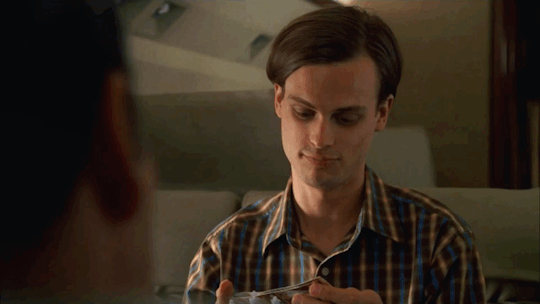
Love You To The Moon & Back
Summary:
“Good morning to you, too,” you kiss his forehead, and he mumbles something else, snuggling deeper into your arms. “What happened to the early bird catches the worm, hmm?”
“....not a bird…no worms please….” he mumbles.
“Hmm,” you respond, rubbing circles along his back, “How about pancakes? I think I might have some blueberries or chocolate chips,” you muse; Spencer peeks up at you. “Ah, I see I’ve piqued your interest.”
Pairings:
Spencer Reid x Male Reader
Tags:
Tattooed Reader (Because I Don’t See Enough Of That) | Fluff | A Wee Bit Of Angst | Developing Relationship | I Shook Spencer & Insecurities Fell Out | Inaccurate Laws & Profiling Probably (Take What I Write With A Grain Of Salt :)
Words: 4690
Author's Note:
Yes, you may 😌. I've been thinking of doing some more stuff for the AUs I make, cause it's fun, and I think male & gender-neutral readers need more AUs. Sorry for making this long 💀.
Previous

I found the experience of falling in love or being in love was a death: a death of everything. You kind of watch yourself die in a wonderful way, and you experience for the briefest moment - if you see yourself for a moment through their eyes - everything you believed about yourself gone. In a death-and-rebirth sense.
- Hozier

Around Spencer, the kitchen felt like a world away as he took in the feeling he was experiencing; with light, frivolous laughter, he hid his face in your chest to stop himself from falling into giddy hysterics. You were equally as giddy, chuckling when Spencer met your eye, “So…what now?” he asked.
“Well, we’ve got a few more hours of work,” you respond, chuckling when his face scrunched up in mock irritation, “but after, we could go on a date,” you suggest.
“Date?”
“Hmm, you know,” you respond, “that thing people do when they want to pursue a romantic relationship.” He smiles; admittedly, he hadn’t thought past the kiss, now surprised to find you wanted to cultivate something along the lines of an actual romantic relationship with him.
“Yeah, I know,” he responds, “what do you have in mind?”
“Well, the museum has a new Classics exhibit,” you reply, and Spencer is amazed that you’d genuinely been paying attention when he’d dumped his knowledge of 15th Century literature on you. “What do you say?”
“Yes,” he nods enthusiastically, excitedly bouncing on the balls of his feet. The hours left at work breeze through fast, and Spencer spends most of it with dancing hands, a wide smile on his face - your date is set to 9:30 AM, Saturday morning. He goes home with a prep in his step, and when the weekend comes around, his enthusiasm soars; Saturday morning sees few clouds in the sky and the promise of sun. Spencer kept to his usual attire of casualness; the streets were averagely busy, and he twists the strap of his satchel on his way there, quelling any anxieties that manage to break past the excitement. Said anxieties are set aside when he notes how well your leather jacket hugs your arms.
“Hey, cookie,” you greet, hand reaching out to hold his.
“Hey,” he threads his fingers with yours, thumb rubbing circles on your skin as you make your way through the museum. The Classics exhibit displayed several kraters from c. 520-500 BCE, Etruscan figurines, Greek and Roman sculptures, and various other artifacts. Classics isn’t as interesting a topic it seems, as the crowd is relatively small, but Spencer is thankful for that - the overcrowded dinosaur exhibit you’d passed came to mind, and he shuddered at the thought of being caught up in that.
“Etruscan tomb painting….” You read off one of the displays before turning to him with a knowing smile.
“Oh, the Etruscans were a civilization that flourished in Central Italy between the 8th and 3rd Century BCE, renowned in antiquity for their rich mineral resources and as a major Mediterranean trading power,” he speaks easily, basking in the fondness you directed towards his rambling. “Much of their history and culture was either destroyed or assimilated into the conquering Roman Empire. Tomb painting is considered one of the Etruscans' greatest legacies, with beautifully painted tombs in Tarquinia, Cerveteri, Chiusi, and Vulci.”
The exhibit didn’t have the actual paintings, instead displaying photographic copies with annotations and interactive maps; the sculptures are set up to mimic the inside of a temple, leading to the back where the kraters are set. The other sculptures are scattered about the room, and Spencer beams when you turn to him for information, having spoken more today than he has in a long time. He coughs in the middle of his tangent about pediments; he rubs the back of his neck and apologizes for the scratchy throat.
You chuckle, “Come on, let’s get something for that cough, eh?” The museum’s cafe is surprisingly empty, with a few people milling about here and there and the majority off at the shops. You both get iced teas and take a table away near one of the window walls. Spencer keeps hold of your hand and drums his fingers mindlessly. He is saddened when the date comes to an end. “C —can we do this again?”
You nod enthusiastically in response, and still riding on the coattails of joy, he asks, “Can I kiss you again?”
“As many times as you like, love.”
He beams, leaning into your space to do just that, his thumb rubs across your skin, and even after you part for the day, Spencer is ecstatic - the joy persisting into tomorrow as he skips with every step. “Well, well, well, someone’s happy,” Derek remarks. “I hope this means you finally said something to loverboy.”
“Yup,” Spencer responds, “we, uh, had a date yesterday.”
Derek pats Spencer’s back with a proud smile, “You know what this means? I, Derek Morgan, was right.” Spencer shakes his head; any attempts to clarify to Derek that this wasn’t exactly an I told you so moment fell on deaf ears as the man smugly waltzed from the elevator with a cheer. Spencer follows after; when you arrive some moments later, it’s with two coffees as usual, and the day begins as the first of many days chasing an unsub through the Appalachian Mountains.
“It’s almost like some twisted sightseeing event,” Derek mumbles. “The unsub’s earliest activities can be traced in Alabama; they kidnap two people, and from what the surviving witnesses have said, make both victims fight to the death, the winner gets to live.”
“Ties get both killed, and refusal to fight does the same,” you add. “They’re patient, willing to wait for months if need be to strike again. The murders between Kentucky and West Virginia had two years between them; if they are following the mountains, then there’s a chance they’ll cross over into Canada and most likely out of our hands.”
“Alright, then, let’s make sure that doesn’t happen,” Gideon says, “What else do we know?”
“They’re also meticulous, the locations, the methods, the choosing of victims. It’s all so careful, like some form of entertainment,” Spencer responds.
The facts are as follows:
The unsub has little regard for other people, seeing them as pawns for their own amusement.
The victims appear randomly selected, but on closer inspection, all seem to play into their disturbing amusement. Features vary, but all work in the retail industry - the unsub walks through retail stores for hours before picking. They’d do the same company for two states before switching to another, then another, and another.
Victims had a week; after that, survivors were left tied, with a sack over their heads at their place of work, and corpses were left in the same place as well.
The unsub didn’t care for publicity and seemed to want to keep it as something private.
Pennsylvania is the next destination; the first victim is already chosen by the time of landing, which leaves one of hundreds if not thousands of other potential candidates. Spencer and Gideon stay with the local police department, you split off with Ellle, and Hotch goes off with Derek. Spencer bounces off theories and facts with Gideon; the profile becomes clearer but comes with a few more holes. The unsub seems well-red, familiar with police procedures, not intimately, more so like someone who’s read and heard extensively enough to understand.
“The space between murders suggests they must have traveling involved in their day-to-day life to be able to do so with such ease. Said life must offer them some satisfaction if they’re able to handle their urges so well.“ Gideon pointed to the mapped-out route of the unsub, “They could be in the tourism field, a flight attendant or a business consultant, something that lets them go from state to state easily enough.”
“Business consultants are sought after for their professional advice and services; they locate challenges in businesses and strategize plans to find solutions; they essentially come in and take over control, in the same way the unsub takes power over one’s life from their victims.” Spencer rambles, “but why target retails workers?”
Gideon sighs, “The higher up the chain you go, the less regard you have for your fellow man,” he states, “83% of retail workers report harassment from customers, the higher the social class, the worse the abuse can be. Our unsub’s disregard for human life may also be intrinsically linked to their social class as well as their occupation.”
“So everyone below a certain point is no better than cattle to them?” Gideon nods in response to Spencer’s question.

“Can I help you folks out?”
The Goodwill of the first victim’s kidnapping was small, residential houses all around; the community around it wasn’t small per se, but close enough to take note when outsiders came about. The manager, Naomi Hughes, is a kind middle-aged woman of relative height, hair in a neat row of braids along her head.
You and Elle introduce yourselves and draw out your badges, “We’re here about Hayden Mullins.”
She nods, “Oh yes…uh…come with me.” She leads you to the back and into her office, “Hayden was working the closing shift when he was abducted, I told him not to work it alone, but he was determined. Home isn’t the happiest place for him,” she explains, “I’d let him sleep here when his dad was making a ruckus, get some food in him. He’s a good kid; I don’t know why anyone would go after him.”
“Did he have any hostile interactions with customers in the days before he was taken?” you ask.
“Who doesn’t? Folks get real snappy when you can’t get them what they want.” She rubs her temple, “I had a customer scream at me 'cause we didn’t carry non-salted water,” she exclaims with quotation marks, “what the hell is non-salted water?”
Elle huffs and shakes her head, “What about friendly customers? Did you notice anyone who didn’t act the way you’d expect? Anyone who stood out for a different reason?”
Naomi purses her lips, “Now that you mention it,” she opens her desk and pulls out a file, “There was this one woman; she was nice, like really nice. She said she’d just come off a four-hour road trip, so we was ready for all sorts of tantrums, but….”
“But what?” Elle asks.
“She was sweet. Smiled at me and said it was alright when we couldn’t get her what she needed,” Naomi’s face scrunched up a little, “I was a little spooked if I’m being honest; I mean, I’ve had nice customers, but she was something else.” She shuddered, passing over the file to you, “I was gonna forget all about her, but….when she looked at Hayden,” she shook her head, “I got a bad feeling.”
Inside the file was a woman’s side profile - hair clipped back into a bun, light makeup from what you can note in the black and white frame, a neatly kept suit - for all intents and purposes, a regular businesswoman.
“Hayden was stocking the shelves, I think, and she got mad when he couldn’t man a checkout. Had to have her escorted from the premises, but she came back again —oh my god, do you think she—”
“We don’t know that yet, ma’am,” you interject, “this is still an ongoing investigation; we’re just looking into all the facts as of now.”
“Don’t blame yourself for anything that happened,” Elle tells her.
Naomi nods, “Promise me something, if…if anything happens, you’ll tell me before you tell the news, understand?” You both nod to her request and leave with the security footage and any receipts linked back to the woman.
“If this, April Walsh is our unsub,” Elle points to the picture, “it sounds like she doesn’t like to lose control, the ties, the refusal to fight, it was in the hands of the victims, it was anarchy….”
“....she can’t let it thrive,” you finish. “The store is already out of her comfort zone and control; what if she assigns roles to the people around her, say Naomi? Managers are notorious for allowing bad behavior, but when Naomi didn’t….” You get behind the wheel and drive while throwing around more theories.
“....she got angry. April told Naomi she came off a four-hour drive; how far is the last crime scene?” She pulls out her phone, and minutes later, she cheers, “Four hours, and eighteen minutes, it’s not much, but….”
“It’s something; let’s get back to Spencer and Gideon with the info.”
“Speaking of Spencer,” Elle chuckles, “a little birdy told me the two of you went out on a date.”
You groan and roll your eyes, “Seriously?”
“Come on, I mean, Derek’s been bragging that he got Mr. Lovebird and the Resident Genius together,” she quips, “plus, you two make a cute couple.”
You smile, “Thanks. At the very least, I know there’s another date somewhere in the future, so good things to come, I hope.”
“Oh, they’re definitely coming,” Elle remarks. You lightly smack her arm and laugh as you pull up to the local precinct. She raises her eyebrows when Spencer greets you laughing when you stick your tongue out at her.
“Hey, cookie.”
“Hey,” he responds, grinning at you, “did you bring me anything?” he quips.
“How does a potential name for our unsub sound?” You give him the file, “and also, a few more details to add to the profile?”
“I’d say it sounds good,” Gideon responds with a small smile. You and Spencer huff, amused and bashful - Elle relays the theories you’d bounced off each other in the car as Spencer pins April’s image on the board, while Gideon does the same to catch you up on what he and Spencer discussed while you were away. “We can brief the officers when Hotch and Derek get back.”
“It’s about two things,” Gideon begins, facing the “control and entertainment. The unsub does not care for anyone but herself; at best, anyone outside of that is a form of entertainment and, at worst, an annoyance.” He points to April’s security image, “April Kennedy Walsh is a business consultant, highly sought after from what we’ve gathered, and meticulous with just about everything, from her schedule to her wardrobe.”
“Her method of murder calls back to the gladiatorial fights in the Colosseum; the emperor and the people of Rome would watch as gladiators fought with each other or animals,” Spencer adds, “she feels no remorse for her victims and rewards winners with their life. Refusing to fight for her amusement might insult her in some way, as though she were an actual Roman emperor.”
“She fits in easily with the crowd from a distance, but up close, her disregard peeks through during moments of loss of control. She’s not shown any violent behaviors during those times, but it can’t be ruled out,” Derek passes copies of April’s photos, “and judging by how she took little time to disguise herself in any way, she’s not afraid of being caught. In fact, this whole chase could be another form of entertainment for her, the same way you or I sit back and watch TV.”
“The potential want to be caught doesn’t mean she isn’t using an alias and could be a way to challenge us, so be on the lookout,” Gideon finished.
The officers split off after the debrief, and you gather back as a group, “There’s a few other Goodwills from the first and a bunch more in Pennsylvania; we can’t search them all,” Elle points out, “and even if we did, she’s patient, she could just as easily wait until the smoke blows over before coming back.”
“We don’t have much of a choice; handing out her photo to the media could cause her to abandon the hunt too, and then we’d have no easy way of finding Hayden,” you say, “there has to be some kind of pattern between the stores she chooses.”
“She chooses the same two stores for each pair of victims, always employees, never managers; after two pairs, she changes stores,” JJ reiterates, “what if she’s following the road? Picking whatever store she sees on her way?” She looks at the map, hand trailing over the red pins set on the previous stores, “The first incident was in Huntsville, Alabama, from there, and according to her schedule, she had been on a back-to-back business expose.”
You pick up blue pins and place them outside the border of the Appalachian Mountains, “In that two-year break period, she was in Lancaster, Ohio.” You put a pin there, “then Richmond, Virginia. Maybe, the two-year gap wasn’t by choice or lack of available victims.”
“Personal tragedy? But we couldn’t find anything like that,” JJ sighed, “then again, we could barely find anything about her personal life. Her parents are divorced, and when I called and asked about April, they hung up on me really quick.”
“What are you thinking?” You ask.
“Well, what if this disregard for people started early? Her mother was a judge, her father a surgeon; I’d say that’s enough money to cover up any accidents,” JJ theorizes, “both high-pressure jobs might have caused the divorce. But why not speak about their daughter?”
“One or both parents could have felt guilty, argued with the other about covering it up, then,” you shrug, “divorce?”
You dial Garcia’s number and wait as the tone rings, “Mistress of all knowledge, how may I enlighten you today?”
“Hey, gorgeous,” you greet, she scoffs on the other end, and you can imagine she’s rolling her eyes.
“Ah, my favorite work of art,” she greets back.
“We need to know if April has any juvenile records, sealed records, anything like that, and if her mother was involved in having them buried.”
“Okie dokie.” She types fast a few clicks later and, “Wow. I’ve found a couple of things, most of them cited as isolated incidents and common behavior among children, but one sticks out, November 23rd, 1999, the same year Judge Walsh resigned from her post.”
“She give any reason why?” You inquire.
“Nope.”
“Alright, thanks, Garcia.”
“Anytime.”
You relay the information, “The divorce happened the next year,” JJ mumbles, “let’s see if we can get those records open.”
November 23rd, 1999. April K. Walsh attended a camping trip near Lake Michigan; during a scavenger hunt, one of April’s buddies - Sam Goodwin - was found face down in the waters; the leading theory was Sam had gotten distracted and veered off the trail, with little experience swimming, Sam may have slipped into the water, panicked then subsequently drowned. The children had been paired into groups of three; the third child, Emma Chavez, had insisted that April had done it, and one detective had shot in the dark - months of investigation, and it looked like April would be facing time in a juvenile detention facility.
“What juvenile detention facility did she get sent to?” Gideon asks.
“None; close to the trial, the whole case fell apart; the next year, Judge Walsh resigned from her post and got a divorce.”
“Phone calls won’t cut it,” Hotch states, “we need her parents down here now.”
Joshua Walsh - now a retired surgeon- stayed close to Lake Michigan after the divorce and never remarried. Sofia Phillips - previously Sofia Walsh, post-divorce, she moved to Vermont, remarried, and had two more children before returning to work as a judge in a more minor position. Both refused to look each other in the eye; Joshua appeared more saddened, while Sofia was irritated.
“I’m sure you have a good reason for dragging me all the way here,” Sofia grumbled.
You knew very little of Sofia Phillips, but from what you could gauge, she held herself higher than others and regarded the investigation with about as much regard as buying the wrong flavor of juice.
“Yes, ma’am, we wanted to ask about your daughter, April,” Hotch replied.
“April? Please, I don’t have a daughter called April anymore.”
Joshua scoffed, “Yes, you do, April Kennedy Walsh,” he turned to her, pulling out his wallet with shaky hands; he riffled through it before holding a picture in her face. “She had your eyes, remember?”
“Yes, I also remember her being dead to me, Joshua,” Sofia responds, glancing away. “She was always troubled. I tried to be a good mother, but sometimes you just can’t beat that attitude out of them.” She crosses one leg over the other, “I thank god I was blessed with two wonderful children after her, kind, obedient, nothing like April.”
“Hypocrite much? Where do you think she got it from, huh?”
Sofia rolls her eyes and glances at Hotch, “Are we finished now? My son has a recital in a few hours.” Hotch nods, and she leaves without a second glance; Joshua stays seated, shaking his head with a sigh.
“April…she’s not a bad kid…just lost. Sofia and I didn’t expect to have kids that early…I mean, we coped, but our jobs….” He looks at the photo again, “I tried as best as I could to be there, but Sofia…I wish I did better."
Joshua reluctantly recounts the event of November 23rd, 1999, alongside his divorce and any other moments before and after that point. The Appalachian Mountains had been Joshua’s dream destination, Sofia, to no surprise, had constantly been vocal about instilling the appropriate life goals in April - high grades, top careers, appropriate connections. The stores chosen all had qualities Sofia had cited as detestable, with Pennsylvania’s first Goodwill reminding her too much of her least favorite architecture - brutalist architecture. So going off that, the next Goodwill would have to be similar in style as well. This new detail leads to a few counties over.
April Walsh doesn’t fight when caught; appearing exhausted, the only other emotion she shows is a mix of relief and joy when she sees Mr. Walsh again, but it’s brief. She sits without prompting, crosses a leg over the other, and makes her only demand, “I’d like to speak to my father—”
“Give us Hayden,” Hotch counters.
“Who? Oh, the retail worker,” she scoffs, “he’s perfectly safe, tied and unconscious in room 345, Liberty Hotel. Now, can I please talk to my father?” Hotch nods, leaving for Hayden with everyone but Gideon and Reid. Hayden is unharmed, drowsy, and confused when he awakes.
You slump into your seat on the airplane, Spencer sits by you, and you lean your head against his shoulder. “No one wake me up for anything,” Derek mumbles across from you, lying across two seats to nap.

“You look bored, cookie.” Spencer glances over at you; the others on the plane have either gone to sleep or relaxed in their seats.
“Maybe, but I’m not sure there’s much to do in an airplane.”
“We could play a game —not that kind,” you remark; he’d raised his eyebrows, and a light blush had dusted his cheeks, “we can do that at a later date, Dr. Reid. Right now, I was thinking of something like the ABC game.”
“ABC game?”
You sit up, “On long car rides, my grandma loved to play it; we choose a topic or theme and go through the alphabet. Say the theme was food, I’d say apricot; then you’d say bread; we can narrow down themes like food to fruits or vegetables.”
“Ooh, that sounds interesting; ok, what’s the theme?” he asks, turning towards you.
“We can stick with food; it’s pretty easy and fun for a first-timer,” you reply, “We’ve got apricot and bread down, so, C, carrot cake.”
“Ok, donut.”
“Éclair.”
“French onion soup.”
You breeze through the first round, and Spencer picks the next theme - countries - which you manage through a quarter of before landing; you carry on while on the tarmac and finish just before leaving for home. It’s late afternoon in Quantico; Spencer bumps his hand against yours as you walk, smiling when you hold his hand in response. Paperwork is easy enough, and once done, you collectively sigh in relief when no other case comes up. It’s not night yet, and hearing everyone else make plans or detail what they have in mind when they leave has Spencer debating on whether to have that second date now.
“Thinking hard?” You ask, laughing when he comes out of his thoughts to find you standing close to him.
“Uh, yeah,” he says, “do you…uh…can we have that second date now? I know this great Indian restaurant, it’s a bit out of the way, but it has very good chicken tandoori.”
“Sure, lead the way.”
The restaurant is nice, getting there just half an hour after it opens at 5:00 PM; there’s plenty of space to choose from; Spencer leads you to his favorite seat by the fish tank. It’s a nice date; Spencer finds his legs close to yours after you split the bill, leaving just after seven. “Did you like it?”
“Loved it,” you respond. “You sure know how to treat a man, sweetheart.”
Spencer tugs at your arm, smiling into the kiss you give him. “Goodnight, love.”

Spencer is soft.
It’s what you repeatedly note - when he smiles, leans into your space for a kiss, or drums your fingers along your hands. When he snuffles in his sleep, a moment before waking up, “Morning….” he’d mumble before dozing off for a few odd minutes.
“Good morning to you, too,” you kiss his forehead, and he mumbles something else, snuggling deeper into your arms. “What happened to the early bird catches the worm, hmm?”
“....not a bird…no worms please….” he mumbles.
“Hmm,” you respond, rubbing circles along his back, “How about pancakes? I think I might have some blueberries or chocolate chips,” you muse; Spencer peeks up at you. “Ah, I see I’ve piqued your interest.” You laugh as Spencer ponders between the comfort of the bed and the prospect of pancakes. You leave him to his decision-making; by the time you’ve made the batter, Spencer shuffles from the bedroom - donning one of your hoodies and rubbing the sleep from his eyes.
Spencer hugs you from the back and pecks the space between your shoulder blades, “Süss,” he says.
You purse your lips and glance over your shoulder at him, “Süss? Come on; I thought you liked a challenge?” You switch off the stove and turn to face him, “German. Sweet.”
“I wasn’t looking for a challenge today,” he clarifies, “I was stating a fact.” He points at you as he repeats the word. “Mein süss.”
You grin, “I’d say you’re the sweet one, cookie.” He scrunches his nose, “Mein süßer Keks.” You wink when he stares at you, “You’re not the only one with a knack for languages.” He sticks out his tongue, leaving the kitchen with the pancakes; you join him at the dining table - he sits with his back to the window, soaking in the sun like a cat.
“Fun fact, chocolate chips melt best at temperatures between 104 °F and 113 °F; the melting process starts at 90 °F when the chips’ cocoa butter starts to heat. For milk and white chocolate chips, the temperature shouldn’t exceed 115 °F; for dark chocolate, it’s 120 °F; otherwise, the chocolate will burn.”
You nod, “Which flavor’s your favorite?”
“The classic chips, made from small chunks of sweetened chocolate, I like to eat them in winter when there’s less chance for them to melt in the bag,” he answers. “What about you?”
“I don’t mind, but I suppose I prefer the classic ones too.” The pancakes were long gone by now, and coffees almost finished; Spencer had come previously to visit but never slept over before, “How’d you sleep?” You ask, placing your arm around his shoulders.
“Good,” he yawns, “you’re really comfortable.” You chuckle as Spencer snuggles closer, “Can we go back to bed?” He asks with another yawn.
“Hmm,” you stand, “you head on in; I’ll take care of the dishes.” He nods, shuffling back to the bedroom; you gather the dishes, rinse off the food, place them in the dishwasher, and leave them to clean. You find Spencer nestled comfortably under the blankets; when you slide in alongside him, he latches onto you, not fully asleep and not fully lucid. You comb your fingers through his hair, and when his breath evens out, you close your own eyes and doze off.

End Note:
This turned out a lot longer than I thought it would, and also, not that I think it needs mentioning, but this and the previous fic takes place somewhere in season one. Stay Hydrated.
#spencer reid x male reader#spencer reid x reader#smart cookie universe :)#shiterequests#this is my reward for finishing my assignment :) i say as i ignore the other assignments. i couldn't find cookie love quotes or titles :(
367 notes
·
View notes
Text
#InternationalSnowLeopardDay: The mythical winged snow leopard on the mountain, now a national symbol of Kazakhstan.

badge from The Golden Warrior burial
Issyk kurgan, ca. 4th-3rd c. BCE
stamped & engraved gold 7.2 × 8.5 cm
National Museum of of the Republic of Kazakhstan collection
#Kazakh art#Central Asian art#Asian art#National Museum of the Republic of Kazakhstan#Golden Man#Golden Warrior#Winged Snow Leopard#Snow Leopard#feline#ancient art#gold#metalwork#funerary art#Snow Leopard Day#International Snow Leopard Day#animal holiday#animals in art#Issyk kurgan#Kazakhstan#national symbol
82 notes
·
View notes
Text


Male Head from a Pediment Statue, perhaps of Dionysus/Bacchus; late 4th - early 3rd c BCE, terracotta | Found in the Auguratorium on the Palatine hill | Held in the Palatine Museum
#ancient art#unfortunately unknown if roman or greek or even etruscan#roman art#ancient greek art#etruscan art#?#roman terracotta#auguratorium#palatine museum#roman relief#dionysus
137 notes
·
View notes
Text
Figurine from Georgia (South Caucasus), c.300-200 BCE: this figurine was found buried in a pit beneath the ruins of an ancient temple; it was decorated with gold jewelry, wrapped in a burial shroud, and then placed in its own special "grave"
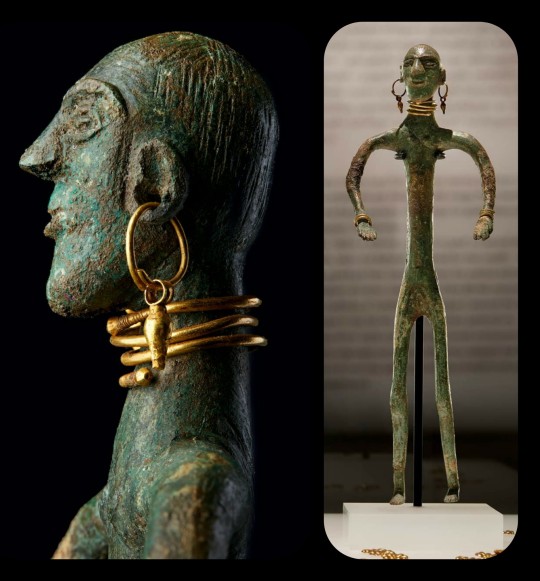
This is one of seven figurines that have been unearthed from similar burial pits throughout the city of Vani, which once served as the cultural, religious, and administrative center for the Kingdom of Colchis. Each figurine was crafted from bronze or iron, decorated with pieces of gold jewelry, wrapped in a special shroud, and then buried in a small "grave" that had been dug beneath (or near) one of the many temples that once stood throughout the city.
From The Golden Graves of Ancient Vani:
... other discoveries at Vani have shed light on Colchian culture. Most compelling are seven metal figurines, dating to 300–200 B.C., that have been discovered both in and near sacred structures at Vani. Adorned with gold jewelry and apparently wrapped in decorated garments, the figures were carefully buried in a way that seems to mimic the human burials at the site. Their precise function remains unclear, but they probably related to local religious and funerary customs.
And the Fitzwilliam Museum (which exhibited some of the artifacts from Vani back in 2008) adds:
Distinct local ritual practices are suggested during [the 3rd century BCE] as can bee seen from the four bronze and iron figurines displayed in the exhibition. These were discovered on the city’s upper terrace and were all buried in or near a sanctuary; this placement may well indicate a religious or funerary function for the figurines. The example illustrated here was placed between two terracotta tiles that were buried in a pit cut into the bedrock, thus mimicking contemporary human burials.
The figurine has a head with disproportionately large features, a low sloping brow, and an elongated torso with bowed arms and stiffly rendered legs. Most striking is its lavish gold jewellery, some of which reflects types worn by those buried at Vani. In addition to gold earrings, a torque (neck ring), and bracelets, five gold rosettes appear to have been strung around the figurine’s head and several pendants were found in its chest area.
The form and detail of their jewellery date the four figurines to the 3rd century BC. Their precise function, surely of local religious nature, still remains a subject of discussion. However, it is worth noting that the intriguing practice of burying such figurines in a ritualistic manner appears to be specific to Vani during its phase as a sanctuary city.
During antiquity, the Kingdom of Colchis covered the Western half of what is now the nation of Georgia, located in the South Caucasus. Colchis was famous for its talented goldsmiths, and it ultimately came to be known as the homeland of the fabled Golden Fleece -- the destination of Jason and the Argonauts, according to the Greek Argonautica.
Sources & More Info:
J. Paul Getty Museum: The Golden Graves of Ancient Vani
Fitzwilliam Museum: Ritual
Fitzwilliam Museum: From the Land of the Golden Fleece
Institute for the Study of the Ancient World: Wine, Worship, and Sacrifice
Journal of Greek, Roman, and Byzantine Studies: Vani: An Ancient City of Colchis (PDF download)
#archaeology#history#artifact#ancient history#art#vani#colchis#kolkheti#sakartvelo#georgia#caucasus#ritual artifact#religion#mythology#anthropology#ancient greece#crafting#sculpture#paganism#ancient ruins#ancient temple
42 notes
·
View notes
Text
❦︎♕︎ Royalty asteroids that are prominent in my astrology natal chart ♕︎❦︎
By : Brielledoesastrology (tumblr)
༄༄༄༄༄༄༄༄༄༄༄༄༄༄༄༄༄༄༄༄༄༄༄༄༄༄༄༄


༄༄༄༄༄༄༄༄༄༄༄༄༄༄༄༄༄༄༄༄༄༄༄༄༄༄༄༄
asteroid Sejong (7365) conjunct my sun (1 orb)
this asteroid is named after King Sejong the great,
His greatest achievement was creating Hangul, the Korean alphabet, but his patronage of science, technology, literature, and medicine all had a large impact on Korea and Koreans. King Sejong is known as one of the greatest rulers of Korea of all time, as he created Hangul (Korean alphabet), encouraged significant scientific advancements, reinforced Confucianism in Korea, and caused many political and social advancements. Sejong, (born 1397—died 1450), monarch of the Chosŏn (Yi) dynasty during his reign (1419–50) cultural achievements in Korea reached their highest point.
asteroid hatshepsut (2436) conjunct my sun (1 orb)
This asteroid is named after the female pharaoh Hatshepsut. Considered one of Egypt's greatest female pharaoh brought great wealth and artistry to her land. She sponsored one of Egypt's most successful trading expeditions, bringing back gold, ebony, and incense from a place called Punt (probably modern-day Eritrea, a country in Africa).
asteroid Carolus Quartus (16951) conjunct my sun (1 orb)
This asteroid is named after Charles IV, Holy Roman Emperor. He is considered the greatest czech of all time. The 14th century – particularly the reign of Charles IV (1342–78) is considered the Golden Age of Czech history. He gained more through diplomacy than others did by war, and through purchases, marriages, and inheritance as he enlarged his dynastic power.
asteroid Vaclav (8740) conjunct my sun (2 orb)
This asteroid is named after Wenceslaus I, Duke of Bohemia. It's hard to find stories about him but all i know is that he is known for being "Good" and people make famous songs about him. Oh yeah uh also his evil brother killed him too..
asteroid Reyes (14684) conjunct my sun (1 orb)
"Reyes" or "Rey" means "Kings" or "King" in Spanish.
asteroid Koniq (3815) conjunct my mercury (1 orb)
"Koniq" means "King" in German.
Update:
asteroid Zoser (4907) conjunct my sun (2 orb)
This asteroid is named after the pharaoh Djoser. Djoser, also spelled Zoser, second king of the 3rd dynasty (c. 2650–c. 2575 bce) of ancient Egypt, who undertook the construction of the earliest important stone building in Egypt. His reign, which probably lasted 19 years, was marked by great technological innovation in the use of stone architecture. King Djoser's architect, Imhotep, built the first pyramid by placing six mastabas, each smaller than the one beneath, in a stack to form a pyramid rising in steps.
#astrology#astro notes#astro observations#astrology observations#astro community#astrology notes#zodiac#gemini#aquarius#astroblr#tarotblr#witchblr#astrology blogs#astrology community#astrology asteroids#asteroids astrology observation#asteroids in astrology#asteroids astrology#brielledoesastrology#royal asteroids#asteroids named after royalty#royal astrology
205 notes
·
View notes
Photo

Female Figure. 1st century BCE–3rd century CE. Credit line: The Michael C. Rockefeller Memorial Collection, Gift of Mrs. Nelson A. Rockefeller, 1979 https://www.metmuseum.org/art/collection/search/314035
#aesthetic#art#abstract art#art museum#art history#The Metropolitan Museum of Art#museum#museum photography#museum aesthetic#dark academia
41 notes
·
View notes
Text

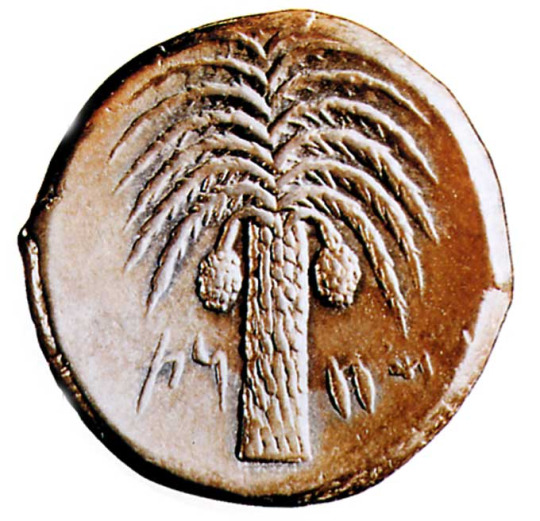
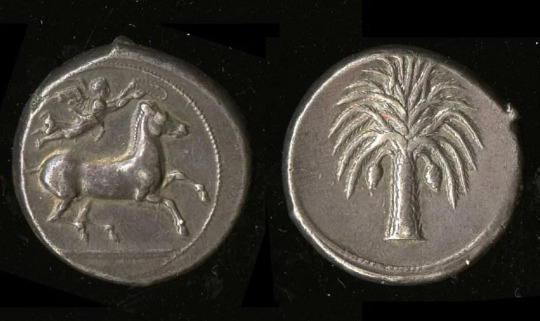
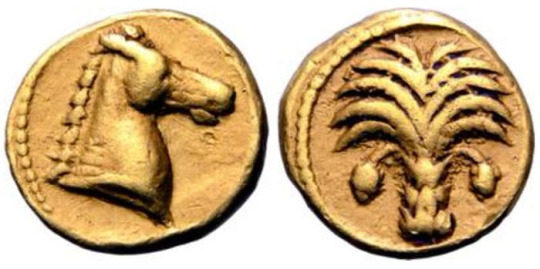
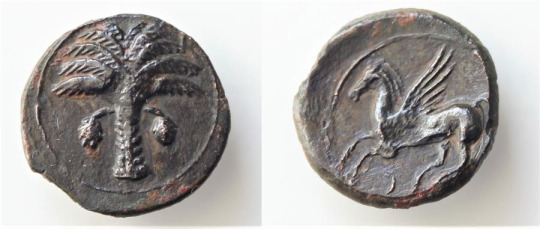

Various Carthagian/Punic Coins (5th-3rd c. BCE)
#carthage#carthagian#punic#phoenician#phoenicia#coin#coins#horse#angel#tree#tree of life#pegasus#nike#genius
80 notes
·
View notes
Note
Heya, I was researching SWK's various sworn brothers because I kept hearing abt this one sworn bro of his called "The Female Demon Monkey King" and obviously with a name like that I was curious abt them. But for some reason I can't find any info abt them anywhere online, and one Tumblr post said that the Female Monkey King and the Macaque King were the same person? I was wondering if you knew anything abt that and had additional info abt the Female Monkey King?
[08-05-23: I've updated this entry. It will differ from the previous version reblogged by others in the past. See the link below for my new article on the subject.
08-06-23: Given our recent discussion, @sketching-shark and @wiings-kwami might find this interesting.]
She seems to be based on a discrepancy in Anthony C. Yu's (Wu & Yu, 2012) translation.
JTTW uses the term Mihou wang (獼猴王) three times to refer to the same character. Yu (Wu & Yu, 2012) translates this twice as “Macaque King” (ch. 3 & 4) but later changes it to “Female Monkey King” (ch. 41). Despite the original Chinese referring to the character as the “fifth brother” (wuge, 五哥), Yu (Wu & Yu, 2012) appears to represent them as a woman based solely on the association of mihou (獼猴) with female monkeys. However, not even JTTW follows this association, for out of 13 mentions of the term, over 61% refer directly to Liu’er mihou (六耳獼猴), Sun Wukong’s six-eared doppelganger. In addition, the term is even used once in the novel to refer to monkeys as a whole.
The term mihou (獼猴) is just one of several transcriptions for a non-Chinese word used in China for millennia to mean “macaque” or “monkey.” Dynastic sources show that the association with female monkeys is a misunderstanding based on changes in dialect, along with differences in transcription. Said changes include muhou (沐猴, “bathing monkey”), muhou (母猴, “mother monkey”), and of course mihou (獼猴). Therefore, the word can be applied to either male and female monkeys.
The last point is exemplified in Buddhist literature. A 3rd-century CE Chinese version of the Dasaratha Jataka, which retells the Hindu epic Ramayana (5th-century BCE), references the great battle between the monkey king brothers Sugriva and Vali and calls the former Mihou (獼猴). A 3rd-century Chinese version of the Mahakapi Jitaka, which tells of the Buddha’s past life as a monkey king, also refers to him as Mihou wang (獼猴王). And a 5th-century variant of the same story refers to the Enlightened One as the Shan mihou (善獼猴), or “Good Macaque.”
#Monkey King#Female Monkey King#Sun Wukong#Six Ears#six eared macaque#journey to the west#jttw#lego monkie kid#LMK#Macaque King#Macaque
84 notes
·
View notes
Text
SET SIXTEEN - ROUND ONE - MATCH SEVEN


"Mummy with An Inserted Panel Portrait of a Youth" (c. late 1st century BCE to late 3rd century CE) / "Little Girl Looking Downstairs at Christmas Party" (1964 - Norman Rockwell)
MUMMY WITH AN INSERTED PANEL PORTRAIT OF A YOUTH: I love looking at mummy portraits because it just feels like I’m staring into someone's soul. It just feels like such a deep depiction of love. Beyond that, it’s always so startling to see people from hundreds of years ago look like some guy in your math class (marwamarwa) (also submitted by rhytons)
LITTLE GIRL LOOKING DOWNSTAIRS AT CHRISTMAS PARTY: i've been wondering about childhood and how far away adult life feels like. this picture perfectly captures it. the longing for something more than to be seen as a child, to be seen as a person, yet denied of that chance and left to observe the smiles and happiness. it's christmas! CHRISTMAS! and yet, as the parents mingle among themselves, getting lost in stories of old and laughing at all that once was, sits a girl who watches with fiery eyes, yearning and also repulsed that this is her reality. this is not how the artist probably mean for it to mean, but it's what it means to me. the contradiction and irony of such a lovely occasion, the tension between the feeling of wanting to be a part of but also not understanding or feeling adulthood is leaps beyond bound of what small kids can comprehend. we wait for the time to come. that our bodies may grow large enough for us to say "we're here!" and for others to acknowledge our presence, and let us join the party. HNGGG. (godsbride)
("Mummy with An Inserted Panel Portrait of a Youth" is a piece dating back to the late first century. It is currently held at the Metropolitan Museum of Art in New York.
"Little Girl Looking Downstairs at Christmas Party" is a 1964 oil on canvas painting by American artist Norman Rockwell. It measures 28 by 29 inches (71.1 by 73.7 cm) and is privately owned.)
72 notes
·
View notes
Text

Female Europid Mummy from the Necropolis of Subexi III, Grave M6, Turfan District, Xinjiang. 5th-3rd C. BCE. Source: Baumer, Christoph.The history of Central Asia. Vol.1. The age of the steppe warriors. London : I.B. Tauris, 2012. pg. 218 left DS329.4 .B38 2012. Image via University of Pennsylvania. See maps in the post before this one for a better understanding of the geography discussed.
"Section 26 – The Kingdom of Nearer [i.e. Southern] Jushi 車師前 (Turfan)
1. ‘Nearer Jushi’ 車師前 refers to the kingdom or state centered in the Turfan oasis or, sometimes, to the tribe which controlled it. There can be no question that Nearer Jushi refers here to the Turfan Oasis. See for example: CICA, p. 183, n. 618; also note 1.5 above. For the etymology of the name Turfan see Bailey (1985), pp. 99-100, which is summed up in his sentence: “The name turpana- is then from *druva-pāna- ‘having safe protection’, a name suitable for a walled place.”
“One other oasis town is currently under excavation. At Yarghul (Jiaohe), 10 km (16 miles) [sic – this should read 10 miles (16 km)] west of Turpan, archaeologists have been excavating remains of the old Jushi capital, a long (1,700 m (5,580 ft)) but narrow (200 m (656 ft)) town between two rivers. From the Han period they uncovered vast collective shaft tombs (one was nearly 10 m (33 ft) deep). The bodies had apparently already been removed from these tombs but accompanying them were other pits containing form one to four horse sacrifices, with tens of horses for each of the larger burials.” Mallory and Mair (2000), pp. 165 and 167.
“Some 300 km (186 miles) to the west of Qumul [Hami] lie [mummy] sites in the vicinity of the Turpan oasis that have been assigned to the Ayding Lake (Aidinghu) culture. The lake itself occupies the lowest point in the Turpan region (at 156 m (512 ft) below sea level it is the lowest spot on earth after the Dead Sea). According to accounts of the historical period, this was later the territory of the Gushi, a people who ‘lived in tents, followed the grasses and waters, and had considerable knowledge of agriculture. They owned cattle, horses, camels, sheep and goats. They were proficient with bows and arrows.’ They were also noted for harassing travellers moving northwards along the Silk Road from Krorän, and the territories of the Gushi and the kingdom of Krorän were linked in the account of Zhang Qian, presumably because both were under the control of the Xiongnu. In the years around 60 BC, Gushi fell to the Chinese and was subsequently known as Jushi (a different transcription of the same name).” Mallory and Mair (2000), pp. 143-144.
“History records that in 108 BC Turpan was inhabited by farmers and traders of Indo-European stock who spoke a language belonging to the Tokharian group, an extinct Indo-Persian language [actually more closely related to Celtic languages]. Whoever occupied the oasis commanded the northern trade route and the rich caravans that passed through annually. During the Han Dynasty (206 BC-AD 220) control over the route see-sawed between Xiongnu and Han. Until the fifth century, the capital of this kingdom was Jiaohe.” Bonavia (1988), p. 131.
“Turpan is principally an agricultural oasis, famed for its grape products – seedless white raisins (which are exported internationally) and wines (mostly sweet). It is some 80 metres (260 feet) below sea level, and nearby Aiding Lake, at 154 metres (505 feet) below sea level, is the lowest continental point in the world.” Ibid. p. 137.
“The toponym Turfan is also a variation of Tuharan. Along the routes of Eurasia there are many other place names recorded in various Chinese forms that are actually variations of Tuharan.” Liu (2001), p. 268."
-Notes to The Western Regions according to the Hou Hanshu. Second Edition (Extensively Revised and Expanded). John E. Hill. University of Washington.
#tocharian#celtic#indo european#tarim basin#xinjiang#chinese history#mummies#history#ancient history#archaeology#anthropology#silk road#pagan
458 notes
·
View notes